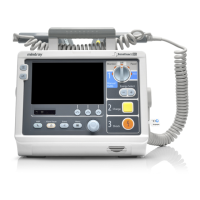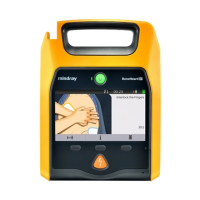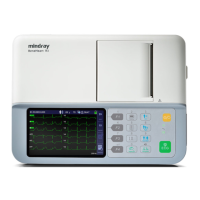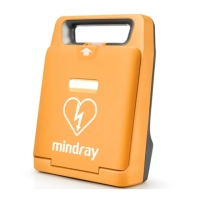6 - 1
6 Manual Defibrillation
6.1 Manual Defibrillation Safety Information
• Defibrillation current can cause operator or bystander severe injury or even death. Do not touch the
patient or any metal objects (including bed or gurney) connected to the patient during
defibrillation.
• Avoid contact between parts of the patient’s body such as exposed skin of head or limbs, conductive
fluids such as gel, blood, or saline, and metal objects such as a bed frame or a stretcher which may
provide unwanted pathways for the defibrillating current.
• During defibrillation, do not allow electrode pads and paddles to contact each other or to contact
with ECG electrodes, lead wires, dressings, etc. Contact with metal objects may divert current away
from the heart, which result in electrical arcing and patient skin burns.
• During manual defibrillation, make sure your hands are dry and free from conductive gel to avoid
shock hazard.
• During synchronized cardioversion, if monitoring patient’s ECG through external paddles, artifact
introduced by paddle movement may resemble an R-wave and trigger a defibrillation shock.
• Do not use conductive liquid. Use only conductive gel specified by the equipment manufacturer.
• If external paddles are used for defibrillation, apply the external paddles tightly and evenly to the
patient’s chest to ensure good skin contact.
• Clinicians must select an appropriate energy level for defibrillation of pediatric patients.
• Accessing the Manual Defib mode can be configured as password protected. Make sure you know
and remember the password. Otherwise the manual defibrillation therapy cannot be delivered.
• Clear the conductive gel from the external paddles at the completion of the therapy to prevent the
paddles from being corroded.
• Prior to using the equipment, disconnect the patient from all equipment that is not defibrillation-
protected.
• Never charge and deliver shock frequently in non-clinical situations. Otherwise equipment damage
could occur.
• Impedance is the resistance found between electrode pads orexternal paddles. To deliver an
effective discharge of energy, the impedance must be overcome. The degree of impedance varies
with the patient. It is also affected by other factors, such as the presence of chest hair, moisture, and
lotions or powders on the patient skin. If the “Impedance Too High, Shock Not Delivered” message
appears, make sure that the patient’s skin has been dried and that any chest hair has been clipped. If
the message persists, replace the electrode pads or the pads cable with a new one.
• Alarms are switched off automatically and the “Alarm Off” message is displayed when the
equipment enters the asynchronous defibrillation mode. Alarms remain off until toggled on by
pressing the Alarm Pause button, the Sync mode, the Monitor mode or Pacer mode is entered.
• Defibrillation is always performed through paddles or electrode pads. However, you can also use
ECG electrode as an alternate ECG source to monitor ECG during defibrillation. If the ECG electrodes
are connected, any available lead may be displayed.
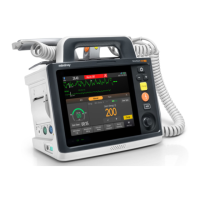
